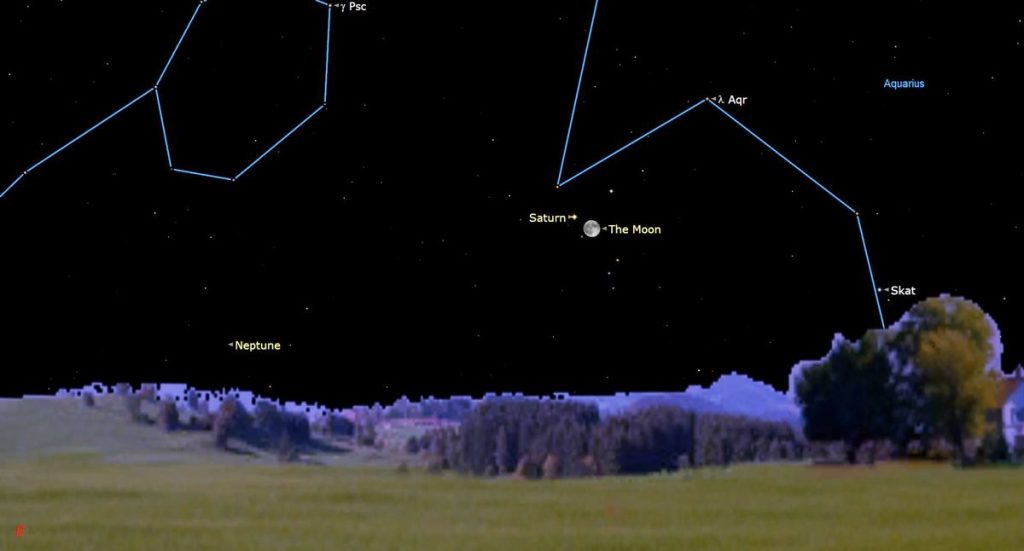
The moon and Saturn make a great pair in the sky tonight.
Saturn and a nearly full moon will rise in southeastern skies just after sunset in the Aquarius constellation. The moon will be bright and unmistakable; Saturn will be located just above it. The pair will remain in the sky the entire night, setting in the west well after sunset on Wednesday (Aug. 21).
Aside from forming a pleasing pairing in the night sky, Saturn and the moon will also experience what’s known as a conjunction. This means they will share the same right ascension, which is the celestial equivalent of longitude. The conjunction will occur at 11:01 p.m. ET (0301 GMT on Aug. 21).
During close approach and conjunction, the moon will be stunningly bright at magnitude -12.7 (the more negative a number is, the brighter the object). Saturn, meanwhile, will be much less radiant at magnitude 0.6. It might be difficult to make out the ringed planet with your naked eye due to the glare of the moon; viewing them through a telescope or pair of binoculars equipped with a moon filter could help.
While the pair will rise quite close together early in the evening, they will grow more distant throughout the night. As the moon and Saturn cross the sky together, they will grow farther apart relative to our viewing position here on Earth due to our planet’s rotation and the moon’s eastward motion through the sky.
While North America, Australia and Asia will see the duo cross the skies side-by-side, a large swath of Earth’s surface will witness what is known as a “lunar occultation” as Saturn passes behind the moon’s upper edge before reappearing below. The northernmost countries of South America, western and northern Africa, and parts of western Europe will be able to see this phenomenon. For a map of which locations will be able to see the lunar occultation, visit InTheSky.org.
However, if you’re not along this path, you’ll still be able to witness this phenomenon thanks to a free livestream from the Virtual Telescope Project that begins at 11:00 p.m. ET on Aug. 20 (0300 GMT on Aug. 21). Watch it here when the time comes, courtesy of astronomer Gianluca Masi of the Virtual Telescope Project.
The moon never disappoints through optics of any size. If you want to get a closer look at the moon’s many features, be sure to take a look at our guides to the best telescopes and best binoculars.
And if you want to photograph meetings between the moon and Saturn (or any other planet), we have tips for how to photograph the moon and how to photograph the planets, as well as guides to the best cameras for astrophotography and best lenses for astrophotography.
Don’t miss our night sky tonight page and monthly skywatching calendar for more celestial events to take in!

